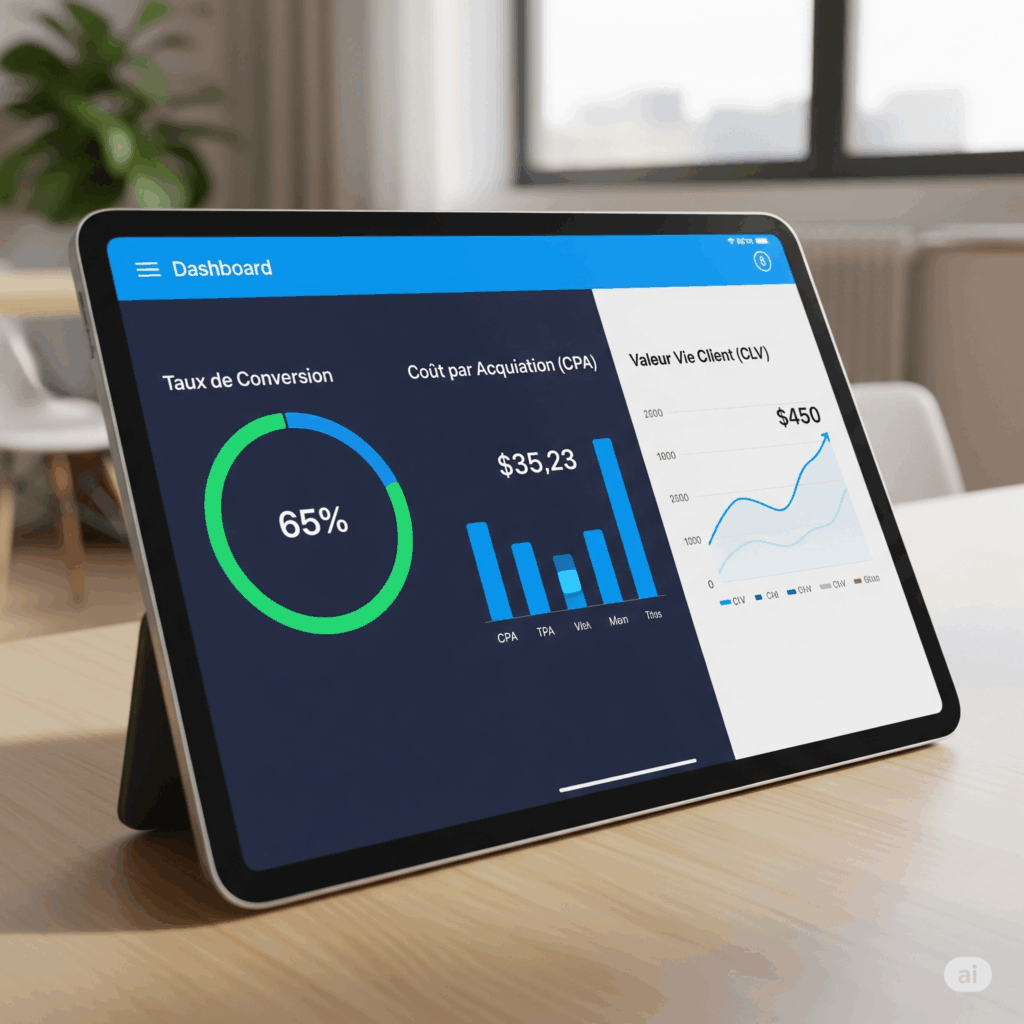You have just launched your new website. You check your statistics every morning and enthusiastically watch the number of “visitors” climb. That’s good news, isn’t it? Not necessarily.
In digital marketing, it is easy to be swayed by what we call “vanity metrics”. The number of visits, page views, or “Likes” on a post are pleasant figures to observe, but they often say nothing about the actual performance of your website. Your site is not merely an online brochure; it is an investment that must generate concrete results for your business.
So, how do you measure the true return on investment (ROI) of your site? By focusing on the metrics that directly impact your revenue. Here are the indicators you should truly track.
1. The Conversion Rate: the Key Indicator
The conversion rate is the percentage of visitors who complete a desired action on your site. It is the most important indicator, as it measures your site’s effectiveness in transforming a simple visitor into a potential client or a paying customer.
A “conversion” can be:
- Filling out a contact form.
- A phone call initiated from your site.
- Subscribing to your newsletter.
- Downloading a guide or brochure.
- A purchase on an online store.
A site that receives 1,000 visitors per month but generates 50 submission requests (5% conversion) is infinitely more effective than a site with 10,000 visitors that generates only 20 (0.2% conversion).
How to track it? By configuring “goals” in tools like Google Analytics.
2. The Cost per Acquisition (CPA): how much Does a New Client Cost You?
CPA is simple to understand: it is the total amount you spend on marketing to acquire a single client. For your website, this involves dividing your expenses (hosting, maintenance, online advertising, SEO, etc.) by the number of new clients generated directly by the site.
Example: If you spend $500 per month on Google Ads[cite:77] and that brings you 10 new clients, your CPA is $50.
This figure is crucial because it allows you to know if your investments are profitable. If a new client brings you an average of $500, a CPA of $50 is excellent. If a client only brings you $40, you are losing money. The goal is to always seek to decrease your CPA.

3. Customer Lifetime Value (CLV)
How much does a client bring you, not just on a single transaction, but over the entire duration of your business relationship? This is what CLV measures. This indicator is often overlooked, but it is fundamental for evaluating long-term ROI.
Your website can attract a client for a small initial engagement, but if this client returns for recurring services for years, their true value is much higher. By knowing your CLV, you can afford to have a higher cost per acquisition (CPA) to attract quality clients who will be loyal.
Our new AI + CRM integration solutions and automated client tracking are specifically designed to increase retention and, consequently, your clients’ CLV.
4. Lead Quality
Not all leads are equal. A form filled out by the CEO of a growing company you are targeting has much more value than an irrelevant information request.
Instead of asking yourself “How many leads has my site generated?”, ask yourself “How many qualified leads has my site generated?”.
A high-performing website uses targeted content and clear calls to action to attract the right type of clientele. By integrating your site with a CRM, we can track which leads convert into clients and thus optimize the site to attract more ideal clients.
Conclusion: from Vanity to Profitability
Stop measuring your website’s success by the number of visits. The true performance indicator is its ability to generate profitable actions for your business. By focusing on conversion rate, cost per acquisition, customer lifetime value, and lead quality, you will obtain an accurate and precise picture of your return on investment.
These figures may seem complex to track, but with the right tools and strategy, it is entirely accessible.
Do you wish to implement an effective measurement system for your website? Contact Les Communicateurs. We can help you implement smart dashboards and tracking systems to make decisions based on real data, not on vanity metrics.









